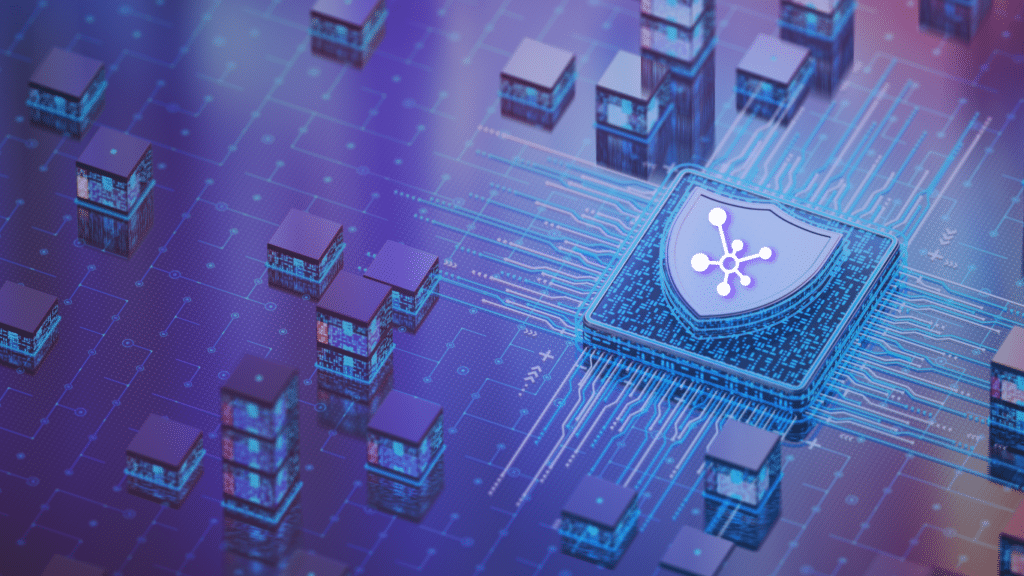When networks chatter, packet capture listens. It’s the tech wizardry that grabs and stores data zipping across your network—vital for security pros and IT gurus to troubleshoot threats or catch cyber sneaks red-handed. Think of it as a high-stakes digital stakeout where every byte could be a clue.
Dive in and you’ll get the lowdown on how this sleuthing plays out in real-time, snagging full packets for deep dives later. You’ll also meet some top-shelf tools like those NetWitness offers.
Catching wind of trouble? Packet analysis tools will arm you with insights into traffic patterns, letting you spot issues before they balloon into full-blown problems or track down culprits after an incident has rocked the boat.
The Fundamentals of Packet Capture
Understanding the intricacies of packet capture is crucial for professionals striving to maintain network security and optimize performance. This method serves as a digital net, intercepting data packets that traverse the vast ocean of network traffic. By examining these captured snippets, we glean invaluable insights into the health and safety of our cyber environments.
What is Packet Capture?
Packet capture is akin to taking a snapshot of digital communications—a meticulous record of every byte that passes through a network link. These snapshots are stored in PCAP files, serving as detailed transcripts for later scrutiny by security teams or during performance monitoring sessions.
In essence, capturing packets allows us to freeze time and dissect complex interactions at our leisure—whether those be mundane exchanges between servers or nefarious attempts by attackers trying to sneak past defenses undetected.
How Does Packet Capture Work?
To start with packet captures on any given network link requires specialized software or hardware tools known commonly as packet sniffers. Such tools leverage promiscuous mode—a setting allowing them to eavesdrop unobtrusively on all traffic regardless if it’s destined for them—and port mirroring techniques which clone data from one route onto another where it can be inspected without interference.
This act isn’t merely passive observation; sophisticated filtering mechanisms hone in on specific IP addresses or protocols ensuring only relevant information makes its way into the resulting PCAP file analysis—leaving out unnecessary noise while highlighting potential issues like malicious IPs attempting unsanctioned access.
NetWitness Packet Capture, an advanced platform designed for this purpose, exemplifies such technology prowess by providing unique capabilities beyond what traditional methods offer including tailored analytics aimed directly at aiding incident response efforts.
The merits full-fledged captures hold over their partial counterparts cannot be overstated. With complete visibility comes clarity. Each individual fragment tells part of a larger story when strung together, giving users the ability to trace the source, destination address, and other header fields associated within the context entire session rather than piecemeal fashion.
A critical advantage fully encompasses the forensic value. In the aftermath of a breach, a comprehensive dataset offers unparalleled depths of investigation compared to pared-down versions. It presents a clear narrative of unfolding events, helping identify culprits behind security events. Moreover, even subtle anomalies stand out against the backdrop of normal activity, thus aiding swift remediation before damage spreads too far wide.
From advanced tools for network analysis to unique network challenges, NetWitness’s tools offer real-time visibility into network traffic, enabling security professionals to detect and respond to threats swiftly.
Comprehensive Benefits of Full Packet Capture
The value of full packet capture cannot be overstated when it comes to securing and optimizing network performance. Unlike partial packet captures that might only record headers or metadata, a full packet capture takes in every bit of data traversing the network. This means security teams have access to an exhaustive view—headers and payloads included—for analysis.
Forensic Analysis Post-Incident
In the aftermath of a breach, time is often against investigators. Here’s where NetWitness, with its robust capabilities for full packet capturing, shines as an invaluable asset for incident response teams. The ability to look back at actual packets helps analysts uncover exactly what transpired on the network during an attack.
An accurate reconstruction relies heavily on PCAP files; these are like black boxes recording all traffic—including any malware communication or exfiltration attempts—that can provide vital forensic clues post-incident. Having both payload and complete metadata allows security experts not just to identify but also to understand sophisticated threat vectors.
But why does this matter? Well, imagine being able to pinpoint malicious IP addresses involved in an attack by analyzing saved packet captures from NetWitness—a task made more straightforward because you’re dealing with complete data sets rather than fragments that offer limited insights into potential breaches.
PCAP File: A Closer Look at Data Integrity
The PCAP file, serves as a crucial digital repository, encapsulating every byte traversing your network link. Picture it as the indisputable truth, a comprehensive record that becomes indispensable when delving into anomalies or potential breaches. In situations where the security of sensitive data hangs in the balance, possessing such meticulous records is not just a preference—it is an absolute necessity for conducting thorough and effective analysis.
At its core, the PCAP file operates as a digital snapshot, freezing in time the intricate details of data exchanges within the network. This includes not only the content of the communication but also crucial metadata such as source and destination addresses, as well as other vital header fields. These elements play a pivotal role in the precise identification of patterns, whether they pertain to performance issues or the early detection of zero-day exploits—vulnerabilities that are exploited by attackers before they are officially recognized or patched.
The granular level of detail offered by full packet capture is invaluable in unraveling the intricacies of network activities. Source and destination addresses provide insight into the origin and destination of data flows, enabling analysts to trace the path of information across the network. Critical header fields furnish additional context, aiding in the identification of communication patterns and potential deviations from the norm.
In high-stakes scenarios, where the compromise of sensitive data could have severe consequences, relying on PCAP files becomes non-negotiable. These records not only serve as a historical account of network transactions but also as a forensic tool, allowing investigators to reconstruct events, trace the steps of malicious activities, and understand the sequence of events leading to a potential breach.
Moreover, the ability to scrutinize PCAP files becomes a proactive measure against unforeseen threats. By meticulously analyzing the contents of these files, security professionals can identify anomalous behavior or patterns indicative of potential security risks. This preemptive approach empowers organizations to address vulnerabilities and potential exploits before they escalate into significant security incidents, thereby minimizing the impact on data integrity and overall network security.
Overall, the PCAP file stands as a sentinel of data integrity, offering a meticulous account of network transactions and serving as a linchpin in comprehensive security analysis efforts. Its role in preserving the digital footprint of network activities is not just beneficial—it is a critical component in fortifying defenses and ensuring the robustness of cybersecurity measures in the face of evolving threats.
Beyond Security Concerns
Full packet capture transcends its role as a security-centric tool and emerges as a versatile asset crucial for maintaining optimal network health. While its primary function is to thwart malicious activities and enhance cybersecurity, its utility extends into broader aspects of network management, troubleshooting, and performance optimization. This multifaceted capability is particularly exemplified through the integration of Network Performance Monitoring (NPM) tools, offering a comprehensive solution that goes beyond the realm of security concerns.
NPM tools, when coupled with full packet capture capabilities, play a pivotal role in addressing various network challenges. One notable area is the effective management of bandwidth, where organizations grapple with the constant demand for efficient data flow. By leveraging full packet capture, NPM tools provide accurate and real-time data on network traffic, enabling administrators to identify and troubleshoot bandwidth hogs. This functionality transforms what could be a nightmarish quest into a manageable task, allowing for precise identification of the sources and patterns contributing to bandwidth congestion.
Latency issues, another common challenge in network management, find resolution through the extensive capabilities of full packet capture coupled with NPM tools. The ability to capture and analyze complete data packets in real time facilitates the identification of bottlenecks and delays within the network. Armed with this information, administrators can proactively address latency problems, ensuring optimal performance and a seamless user experience.
Continuous monitoring techniques, facilitated by the comprehensive data obtained through full packet capture, empower organizations to stay ahead of potential network issues. Commercial-grade solutions, including NetWitness and other providers, offer sophisticated tools that not only enhance security but also contribute to the overall health and efficiency of the network infrastructure.
In the realm of modern-day solution offerings, advanced features further augment the versatility of full packet capture. Filter options, for instance, provide users with the ability to tailor their surveillance according to specific needs. This might involve targeting certain protocol types or traffic patterns, allowing for a more focused and efficient analysis. Additionally, the implementation of measures designed to protect against known suspect IPs capable of launching Distributed Denial of Service (DDoS) attacks introduces an extra layer of security and control.
The integration of full packet capture into network management strategies transforms it into a proactive tool with applications far beyond security concerns. The ability to address bandwidth management, latency issues, and overall network optimization positions full packet capture as an indispensable asset for organizations seeking to maintain not only a secure but also a high-performing network infrastructure. The synergy of NPM tools and full packet capture offers a holistic approach to network management, ensuring organizations are well-equipped to navigate the complexities of the digital landscape.
Advanced Tools for Packet Analysis
The landscape of network security is ever-evolving, and with it grows the need for sophisticated tools that can keep pace. Among these are packet analysis utilities designed to capture, dissect, and analyze traffic flowing across networks.
NetWitness: A Leader in Network Security Monitoring
Distinguished as a powerhouse in this realm is NetWitness. Our tools extend beyond traditional data collection methods by offering real-time visibility into all corners of a digital environment. It doesn’t just stop at surface-level metrics; instead, NetWitness dives deep to give security teams insights needed to detect and thwart complex threats swiftly.
A pivotal aspect that sets NetWitness apart from other solutions is its ability to reconstruct network sessions. By doing so, analysts can review full conversations between endpoints rather than mere snippets or abstracts of data—vital when piecing together an incident response puzzle.
Fueled by advanced heuristics and behavioral analytics, NetWitness stands tall as an ally in safeguarding critical infrastructure against both known vulnerabilities and emerging threats lurking within network packets.
The Art of Reading Packets Effectively
Interpreting the intricate details within a packet capture file is akin to decoding the DNA of network traffic. It reveals the nuances that help diagnose issues or identify security threats lurking beneath seemingly normal data flows.
What is Packet Capture?
At its essence, packet capture is the meticulous process of capturing every fragment of data coursing through a network link. It goes beyond merely observing bytes in transit; it involves deciphering the intricate dialogues between servers and clients. The outcome of this intricate process is the creation of PCAP files—repositories of digital treasures for those adept at navigating their complexities.
Picture the ability to capture and record every exchange within your network seamlessly, without missing a single detail. This is where powerful tools like NetWitness come into play, showcasing their prowess in real-time logging of these interactions. By dissecting actual packets, encompassing every ‘hello’ and ‘goodbye,’ along with vital details like source and destination IP addresses and timestamps, NetWitness paints an exceptionally detailed picture of network activities.
How Does Packet Capture Work?
But how does this magic of packet capture unfold? To comprehend the genesis of these insightful PCAP files, we must peer beneath the surface of packet sniffers—sophisticated entities, whether in software or hardware form, eager to eavesdrop on digital communications without explicit permission from senders or receivers. These tools adeptly slip into promiscuous mode, swiftly transcending privacy boundaries, actively listening not only for overt communication but also for the subtle whispers intended exclusively for recipients identified by unique destination addresses.
In practice, these virtual wiretaps take shape through discreetly inserted hardware taps along physical cables or via port mirroring—a technique creating copies of traffic traversing switch ports. The beauty lies in simplicity: these tools remain indifferent to the nature of the data packets, whether they contain seemingly mundane content or sensitive information. They indiscriminately capture everything because, in the realm of cybersecurity, even seemingly innocuous packets may conceal hidden messages—discernible only through meticulous scrutiny using analysis tools such as NetWitness’ suite, dedicated specifically to deep dives into binary oceans teeming with various protocol sharks that might otherwise swim undetected.
Packet capture transcends the passive observation of network traffic; it is an active engagement with the digital conversations transpiring within the network. The resulting PCAP files, akin to treasure troves, hold the key to understanding and securing the intricate nuances of network communication, and tools like those NetWitness offers serve as skilled interpreters, unveiling the profound insights embedded within the binary exchanges of the digital landscape.
Forensic Analysis Post-Incident
Say goodbye to ambiguity during incident response endeavors. Full packet captures provide vital forensic clues post-incident; encompassing both payload—the meaty part containing actual content—and headers chock-full-of metadata guiding delivery processes ensuring correct routing & execution procedures follow suit precisely as planned out initially before dispatch was ever initiated whatsoever point origin may have been situated geographically speaking worldwide scale contextually relevant discussions concerning topics at hand presently discussed herein thus far.
Armed with this detailed dataset, security pros can play digital detective. They backtracked through the data trail to pinpoint where things went sideways.
Now, delving further into NetWitness’s comprehensive suite of offerings, let’s explore the array of cybersecurity solutions that amplify its capabilities in safeguarding networks and unraveling the complexities of digital ecosystems.

NetWitness Harnessing Deep Packet Inspection for Advanced Cybersecurity
NetWitness, a trusted leader in the cybersecurity realm, comprehends the escalating intricacies of network security. It employs deep packet inspection as a fundamental technology to fortify its cybersecurity offerings.
Let’s delve into how NetWitness utilizes deep packet inspection to deliver real-time visibility into network traffic, identify a broad spectrum of attacks, and furnish organizations with robust forensics capabilities.
NetWitness Network: Revealing Network Activity through DPI
NetWitness Network stands as a cornerstone in NetWitness’ cybersecurity arsenal, alongside NetWitness Logs (SIEM) and NetWitness Endpoint. One of its key strengths lies in its ability to amalgamate in-depth inspection of numerous network protocols with an extensive toolkit for forensic investigations. This dynamic combination grants organizations unparalleled insight into their network traffic, enabling real-time monitoring and scrutiny of data packets.
What distinguishes NetWitness Network is its capacity to dynamically parse and enrich log data at the moment of packet capture. This process generates metadata that significantly expedites the alerting and analysis processes. Consequently, organizations can promptly recognize and counter potential threats, mitigating the risk of security breaches and reducing the impact of cyberattacks.
NetWitness UEBA: Unveiling Unknown Threats
NetWitness UEBA, a Software as a Service (SaaS) offering, leverages user entity and behavioral analytics (UEBA) to swiftly detect unknown threats. Applying advanced behavior analytics and machine learning to data captured through DPI, NetWitness UEBA can identify unusual patterns or activities indicative of emerging threats. This proactive approach proves invaluable in a cybersecurity landscape where novel and sophisticated threats continually emerge.
NetWitness Endpoint: Comprehensive Endpoint Monitoring
NetWitness Endpoint extends its cybersecurity reach beyond network traffic, monitoring activity across all endpoints, whether connected to the network or operating off-network. This holistic approach enables organizations to significantly reduce dwell time—the duration between a security breach and its detection—along with the associated cost and scope of incident response. With NetWitness Endpoint, organizations attain a comprehensive view of their endpoints, facilitating effective identification and response to threats.
NetWitness Orchestrator: Elevating Security Operations
To enhance the efficiency and effectiveness of security operations centers and cyber incident response teams, NetWitness provides NetWitness Orchestrator. This comprehensive security orchestration and automation solution is crafted to streamline incident response processes. Leveraging DPI data and insights, NetWitness Orchestrator empowers security teams to automate response actions, thereby reducing response times and minimizing the potential impact of security incidents.
Why Choose NetWitness
NetWitness emerges as a stalwart in the cybersecurity landscape, understanding and addressing the evolving intricacies of network security with its innovative approach. By harnessing deep packet inspection as a foundational technology, NetWitness fortifies its cybersecurity offerings to provide organizations with unparalleled defenses.
As we’ve explored NetWitness’s key components, such as NetWitness Network, NetWitness UEBA, NetWitness Endpoint, and NetWitness Orchestrator, it becomes evident that each plays a pivotal role in creating a comprehensive security ecosystem. NetWitness Network stands out for its dynamic amalgamation of in-depth inspection and forensic capabilities, offering real-time visibility into network traffic. The proactive approach of NetWitness UEBA, leveraging advanced analytics, swiftly detects unknown threats in the ever-evolving cybersecurity landscape. NetWitness Endpoint extends its monitoring prowess beyond network traffic, drastically reducing dwell time and enhancing incident response capabilities.
NetWitness Orchestrator takes center stage in elevating security operations by providing a comprehensive solution for orchestration and automation. By leveraging DPI data and insights, it empowers security teams to automate responses, reducing reaction times and minimizing the potential impact of security incidents.
In essence, NetWitness’s commitment to utilizing deep packet inspection technology across its suite of offerings not only strengthens organizations’ proactive defense mechanisms but also ensures swift and effective responses to potential threats. NetWitness remains at the forefront of the cybersecurity domain, equipping businesses with the tools they need to navigate the complex and dynamic landscape of digital security.
Conclusion
The journey through the intricacies of packet capture and NetWitness’s advanced cybersecurity offerings has illuminated the critical role these technologies play in securing networks and navigating the ever-evolving landscape of digital security. Packet capture serves as a digital net, capturing every byte of data flowing through the network, providing security professionals with essential tools for troubleshooting and detecting potential cyber threats.
The comprehensive benefits of full packet capture, explored in detail, underscore its unparalleled value in both security and network optimization. PCAP files, acting as meticulous records of network transactions, become indispensable tools for forensic analysis post-incident. They not only serve as historical accounts but also as proactive measures against unforeseen threats, empowering organizations to address vulnerabilities before they escalate.
The discussion on NetWitness has showcased its leadership in network security monitoring, leveraging deep packet inspection to deliver real-time visibility and fortifying organizations against a broad spectrum of cyber threats. The synergy of NetWitness Network, UEBA, Endpoint, and Orchestrator forms a robust cybersecurity ecosystem, providing organizations with the tools needed to proactively defend against cyber threats and respond swiftly in the face of incidents.
In the art of reading packets effectively, NetWitness stands out as an ally, reconstructing network sessions and offering insights beyond surface-level metrics. Netwitness’s ability to unveil the profound insights embedded within binary exchanges positions it as a key player in safeguarding critical infrastructure.
As we navigate the digital environment, NetWitness’s commitment to utilizing deep packet inspection technology reinforces its position at the forefront of the cybersecurity domain. It not only equips organizations with powerful tools for defense but also ensures they remain agile in the face of evolving threats.
The exploration of packet capture and NetWitness’s offerings emphasizes the significance of staying vigilant, proactive, and technologically equipped in the dynamic realm of cybersecurity.






